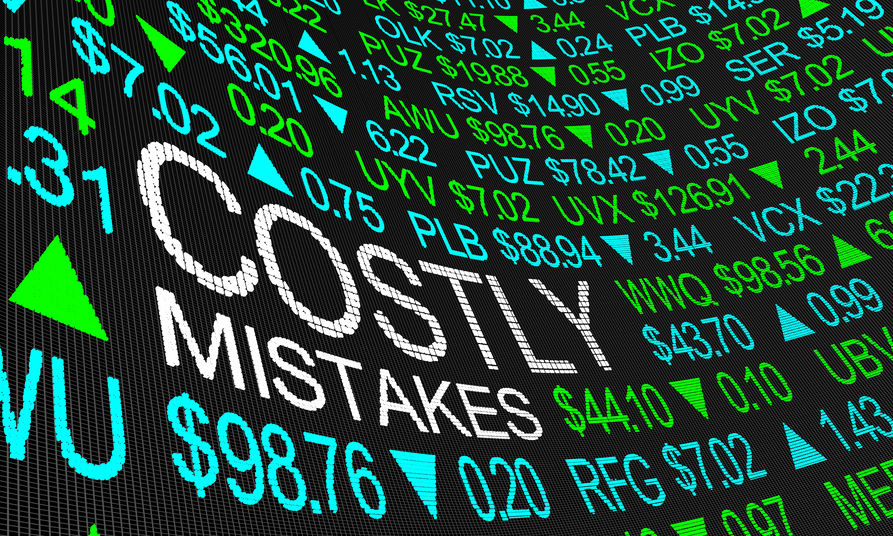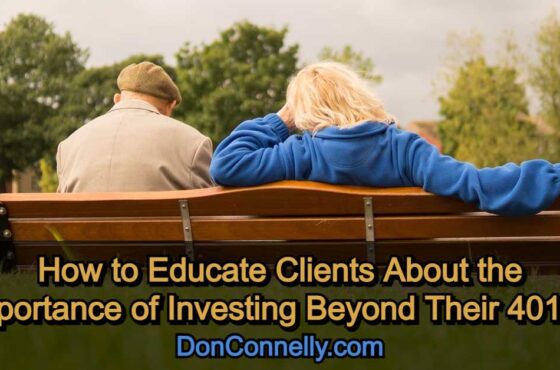Reasons Clients Need a Financial Advisor – Overcoming the Do-It-Yourself Objection
 We’ve all encountered them: The prospect or client who wants to go it alone. They want to manage their own portfolio.
We’ve all encountered them: The prospect or client who wants to go it alone. They want to manage their own portfolio.
Well, here’s one approach you can use:
First, ask the question, “Can I share something with you?” (I like this phrase because it’s non-confrontational. It doesn’t activate the prospect’s ego, leading to an argument you can’t win. It neutralizes it.
Then you can show them the latest DALBAR study.
It doesn’t matter much what year you use. The results for individual DIY investors are almost always dismal: According to the 2019 DALBAR Quantitative Analysis of Investor Behavior, the typical do-it-yourselfer achieved an annual real return of just 1.71%.
Compared with the S&P 500, do-it-yourself investors lagged the S&P 500 by huge margins:
- 35 percentage points, annualized, over five years;
- 46 percentage points, annualized, over 10 years;
The reason: Bad market timing decisions. People pile into the market at the wrong times, and then they panic and sell at the wrong times.
Why? Because people are irrational, and are hardwired to make sub-optimal decisions.
Why Investors Fail
We’re all human. We all succumb to all manner of cognitive traps. And high intelligence doesn’t exempt them. Here are some of the most common cognitive biases that sabotage investors’ decision-making.
#1. The Dunning-Kruger Effect.
People tend to overestimate their own competency. This leads to overconfidence, and underestimating the limits of their own understanding. You’ve heard it said, “a little learning is a dangerous thing.” A little learning about investing often causes people to think they’re Warren Buffett.
They’re not. They’re the people in the DALBAR study. All of those people thought they could manage their own portfolios. And look at their results. This isn’t Lake Wobegon! Everybody isn’t above average!
#2. Loss Aversion.
Investors are more sensitive to the pain of loss than they are to an equivalent gain. A 10% loss hurts more than a 10% gain feels good. Fear takes over, even after small losses – and distorts the decision-making process. Emotions are a powerful thing – they can overpower the intellect. This in turn causes investors to fail to take enough risk. We see this all the time: People who hold vast cash holdings with little or no exposure to stocks.
It reminds me of an old story about the cautious farmer: It was mid summer, well after planting season, and his friend asked him how his wheat crop was going.
“I didn’t plant any,” said the farmer. “I was afraid of drought.”
“Well,” said his friend, “How about your corn crop?”
“I didn’t plant any corn either,” said the farmer. “I was afraid of a corn blight. I just played it safe.”
Obviously, that plan is a long-term loser.
#3. The Endowment Effect.
People tend to overvalue the things they own. Investors find it hard to sell securities they own, even when the financials are deteriorating fast. People can get sentimental about a stock. It was hard for a lot of people to sell Pan Am stock. Us older folks loved flying Pan Am. Many of us had great memories associated with the now-defunct airline. But their stock certificates are now worth nothing except as collectors’ items.
A financial advisor can help remind the client: The security doesn’t know you own it. It’s not going to have its feelings hurt if you sell that stock and buy a better one.
#4. Anchoring.
People get irrationally fixated on what they paid for something – regardless of what’s happening in the actual market. We see it all the time: They take a loss, but they don’t want to sell it until they break even. Folks, sometimes that doesn’t happen for decades. The Nikkei is still below where it was in 1991!
I’m not a fan of market-timing. But there is a time to move. A good investment advisor can help a client punch through that bias and find some tax-loss harvesting ideas – while moving the position to a better investment.
#5. Recency Bias.
People tend to overestimate the significance of recent events, and irrationally discount longer term trends. Those of us over a certain age remember “Black Monday:” October 19th, 1987. The stock market lost a quarter of its value in a single day. That spooked a lot of people – and a lot of people got out of the market right afterwards. Looking back at it now, Black Monday barely registers as a blip in the broad scheme of things.
This is “availability heuristics” at work: Recent losses play havoc on our emotions – and cause us to lose perspective. The long-term trend of the stock market makes any single day’s volatility look insignificant in comparison. So much so that in most cases, when we look back at a single day like Black Monday on a chart, we wonder how we could have panicked.
Keep your eyes on the prize.
#6. Status quo bias.
Objects at rest tend to remain at rest. People are naturally resistant to change. It’s tough for them to pay small costs even for big gains.
#7. Failure to rebalance.
This is closely related to status quo bias and recency bias: People are reluctant to take action to rebalance a portfolio. It’s too much fun to let winners run. It’s also psychologically difficult to sell winners to buy losers. But failure to rebalance quickly causes the client to be dangerously exposed to a downward turn in the markets.
The remedy: Gently remind the client that investing is all about buying low and selling high, while managing risk. Rebalancing periodically takes care of all three imperatives.
#8. Obsessing over taxes.
Which is better? Earn a nickel tax-free? Or earn a dime but give three cents to the government.
The answer is a no brainer! Take the dime!
But this is very difficult for some people to grasp. Some people become so focused on the tax picture that they forget the real objective: Earning good after-tax returns, and generating the best after-tax return possible. You see it when you have someone with a very long time horizon who owns nothing but tax-exempt municipal bonds. Sure, there’s no income tax. But without some stock market and real estate exposure, the client is almost surely giving up some substantial returns, and is dangerously exposed to interest rate risk and inflation risk. He’s opting for the nickel instead of earning the dime.
#9. They watch too much TV.
Many people spend way too much time watching investing shows on TV and reading the financial news. They should stop. The financial media is constantly buzzing about the news – which creates massive recency bias. It plays on your emotions, and causes you to move with the mob instead of against it.
#10. They confuse historical returns with future expectations.
Just because stock A has generated 15% returns per year for the last ten years doesn’t mean it will continue doing so. In fact, the more stocks go up, the more cautious we could be.
#11. They abandon the plan.
Too many people encounter a short-term setback and then abandon the plan we so carefully set up. They get caught up in recency bias, and lose sight of the Big Picture.
Think of it this way: If you set off to drive from New York to Los Angeles, but you ran into a traffic jam in the first five miles, and you start seeing bicyclists passing you, are you going to sell your car and take a bike?
No!
You’re going to be patient and stick with your plan. Because you know traffic jams are a normal part of driving, and that they won’t last very long. You’ll soon be on the open road, making progress to your goal.
Your Clients Need You
All this plays into why people need an advisor. Our clients need us for the same reason even the top PGA and WPGA golfers in the world need a coach:
- We can be objective.
- We can perceive things our clients can’t perceive – about the markets, of course, but more importantly, about our clients themselves.
- We can be accountability partners.
- We’re an educational resource.
- We can provide our clients with a ‘nudge’ in the right direction when they are about to go off track.
To learn more practical ways to overcome the “do-it-yourselfer’s” objection, including effective vignettes and analogies to help the client understand, watch the Webinar Replay, 20 Reasons Everybody Needs a Financial Advisor.
Get this Webinar Replay now for $19.95!
This webinar replay will help you dispel the ridiculous argument that people with no training and no experience should attempt to manage their own financial affairs. Free for PLATINUM members of Don Connelly 24/7.




